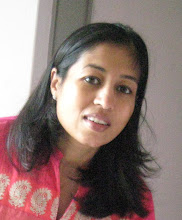Malaysia's rich blend of Chinese and Indian cultures along with the native Malay makes for a unique cornucopia of festivals all year round.
One of the most exciting Malaysian festivals is Thaipusam, a Hindu festival celebrated in January or February. But be warned, with its body piercing, mutilations and frantic parades, it's not for the weak of heart. The festival involves devotees piercing themselves as devotion to Lord Muruga, the youngest son of Lord Shiva.
The main event of Thaipusam is a procession of chanting devotees carrying structures known as kavadi which are frames decorated with coloured papers, tinsels, fresh flowers, and fruits. Some devotees are in trance and as penance, pierce their cheeks, tongues, or foreheads.
Thaipusam is best seen in the temple at the Batu Caves near the Malaysian capital Kuala Lumpur. Devotees carry the kavadi up 272 steps to the entrance of a cave housing an image of Lord Muruga.
One of the most important festivals for the Chinese is the Hungry Ghosts Festival. Like all Chinese festivals, it's a lunar festival. It is celebrated on the 15th day of the 7th moon which means it falls in August. For several days before the actual event begins, there's a build up of festivities featuring Chinese opera and puppet shows held at temples and clan associations.
Like so many Chinese festivals, the Hungry Ghosts festival is about honouring ancestors. According to Chinese beliefs, the spirit world where the dead go is in parallel with the living world. On this special day of the year, the gates between the two worlds open and the hungry ghosts wander the world of the living in search of food and perhaps revenge on those who wronged them in life.
During the Hungry Ghosts festival, people place bundles of joss sticks, paper money, and food on street corners. This is intended to appease the spirits of the dead and dissuade them from entering their homes. The paper money known as 'hell money' is burnt and the Chinese believe this will help their family members in the spirit world.
For our final festival in this article, we'll look at something a little more modern - the World Rainforest Music Festival, a concert with a difference. It's a 3-day event that celebrates the diversity of world music and draws fans from all over the world.
The World Rainforest Music Festival has been held each July since 1997at the Sarawak Cultural Village at the foot of Mount Santubong in Kuching, Sarawak, Eastern Malaysia. The event attracts the talents of both local and traditional musicians along with international performers. In the daytime, the festival features cultural and musical workshop-oriented events with concert performances given in the night.
Malaysia is a vibrant and colourful country at any time but if you arrive there during one of the many festivals and celebrations you'll be assured of an extra special time.
One of the most exciting Malaysian festivals is Thaipusam, a Hindu festival celebrated in January or February. But be warned, with its body piercing, mutilations and frantic parades, it's not for the weak of heart. The festival involves devotees piercing themselves as devotion to Lord Muruga, the youngest son of Lord Shiva.
The main event of Thaipusam is a procession of chanting devotees carrying structures known as kavadi which are frames decorated with coloured papers, tinsels, fresh flowers, and fruits. Some devotees are in trance and as penance, pierce their cheeks, tongues, or foreheads.
Thaipusam is best seen in the temple at the Batu Caves near the Malaysian capital Kuala Lumpur. Devotees carry the kavadi up 272 steps to the entrance of a cave housing an image of Lord Muruga.
One of the most important festivals for the Chinese is the Hungry Ghosts Festival. Like all Chinese festivals, it's a lunar festival. It is celebrated on the 15th day of the 7th moon which means it falls in August. For several days before the actual event begins, there's a build up of festivities featuring Chinese opera and puppet shows held at temples and clan associations.
Like so many Chinese festivals, the Hungry Ghosts festival is about honouring ancestors. According to Chinese beliefs, the spirit world where the dead go is in parallel with the living world. On this special day of the year, the gates between the two worlds open and the hungry ghosts wander the world of the living in search of food and perhaps revenge on those who wronged them in life.
During the Hungry Ghosts festival, people place bundles of joss sticks, paper money, and food on street corners. This is intended to appease the spirits of the dead and dissuade them from entering their homes. The paper money known as 'hell money' is burnt and the Chinese believe this will help their family members in the spirit world.
For our final festival in this article, we'll look at something a little more modern - the World Rainforest Music Festival, a concert with a difference. It's a 3-day event that celebrates the diversity of world music and draws fans from all over the world.
The World Rainforest Music Festival has been held each July since 1997at the Sarawak Cultural Village at the foot of Mount Santubong in Kuching, Sarawak, Eastern Malaysia. The event attracts the talents of both local and traditional musicians along with international performers. In the daytime, the festival features cultural and musical workshop-oriented events with concert performances given in the night.
Malaysia is a vibrant and colourful country at any time but if you arrive there during one of the many festivals and celebrations you'll be assured of an extra special time.


No comments:
Post a Comment